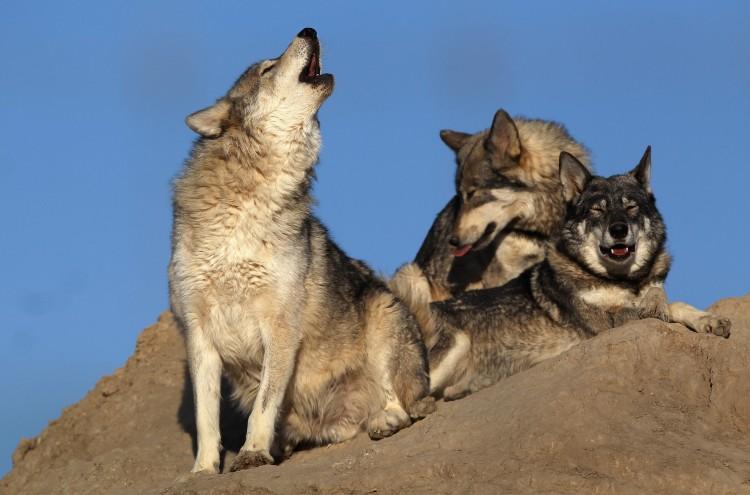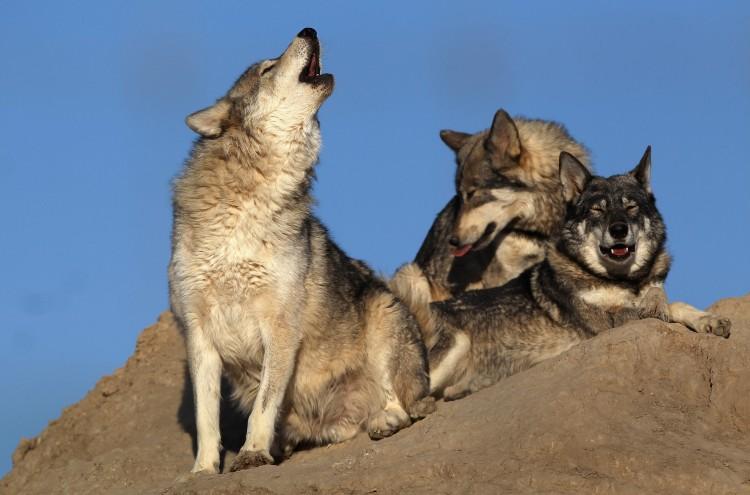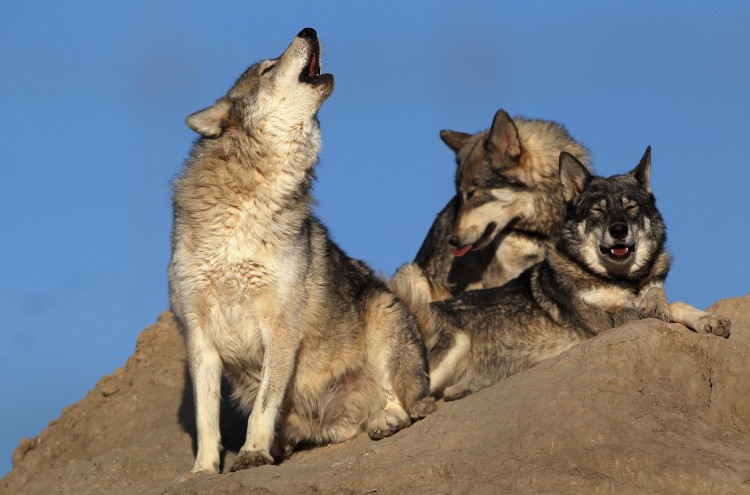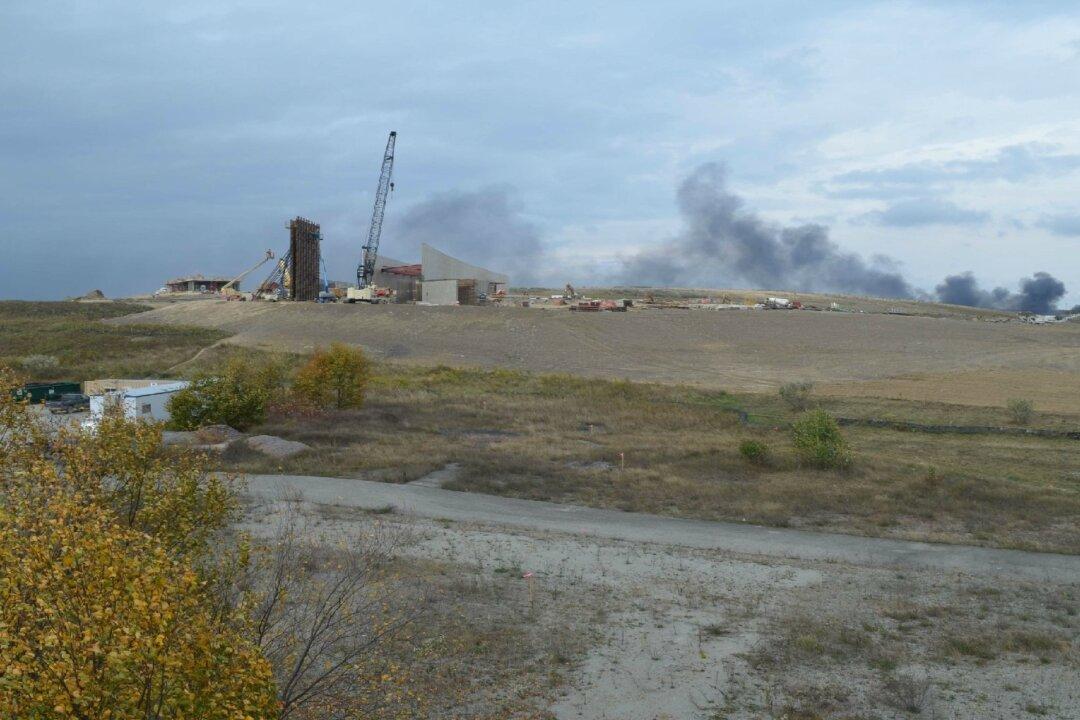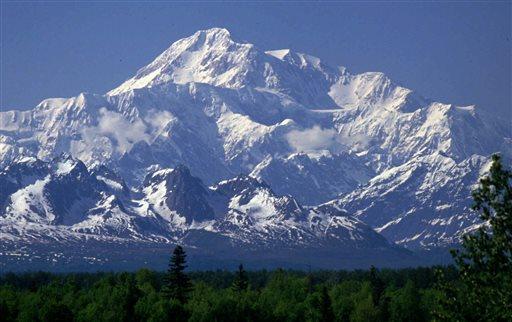BOISE, Idaho—Almost a year after gray wolves were taken off the endangered species list, Idahoans still debate the impact of gray wolves on their human environment and how best to control the wolf population.
The gray wolf, which used to roam most of the United States, was first put on the endangered species list in the 1970s. A federal recovery plan established in 1995 allowed for the release of 35 wolves into the state of Idaho. The wolves repopulated in great numbers.
“The robust recovery went beyond the protection range, and we felt it was detrimental,” said Jon Hanian, press secretary for Gov. Butch Otter. “The concern in Idaho is the impact on livestock and herds.” Means to manage and protect livestock include education and nonlethal means such as live traps, as well as other methods. “Some tools we have include the hunting season to periodically reduce the impact.”
Part of the reason for delisting the species was the considerable population increase. According to Craig White, a wildlife research biologist with the Idaho Department of Fish and Game, there are anywhere from 750–1,000 wolves in Idaho, with about 70 collared, and that is only a minimum estimate. According to the Idaho Governor’s Office of Species Conservation, Idaho’s wolf population has greatly exceeded federal goals and objectives.
Wolf conservationists are happy to hear the news. “It’s good to see the wolves recovering,” said Suzanne Stone of The Defenders of Wildlife. “In the long term, it’s been rewarding to see the species gain a foothold.”
Local ranchers may see it differently. According to the Idaho Fish and Game Management Plan from June 2011, there have been 2,107 confirmed wolf depredations and deaths of pets and livestock since 2003. Numbers such as these serve as the motivation for an amendment added into the Endangered Species Act, which allows for ranchers to protect their property from wolves. For many, however, it’s still not enough.
As of Jan. 17, 2011, 190 wolves have been harvested by firearm, and 49 harvested by trapping.
Stone and other wolf conservationists also understand the importance of hunting.
“Delisting shouldn’t go against conservation,” says Stone. “Hunting has always been part of the plan, and it’s not the problem.”
Among the issues debated is the low number of breeding pairs necessary before the wolves are required to again be relisted. Idaho must maintain at least 15 breeding pairs and 150 wolves to keep the species from being returned to the endangered species list.
“The flaw is in allowing unsustainable low levels within the population,” said Stone, adding that, rather than fighting, people on both sides could certainly communicate more effectively to help the situation. “There are ways to improve, but it takes time.”
If the gray wolf is relisted in the future, many also question why this subspecies of wolf should be legally protected.
According the United States Forest Service, the native gray wolf in Idaho is Canis lupus irremotus, commonly named the northern Rocky Mountain gray wolf. In the Endangered Species Act of 1973, the northern Rocky Mountain gray wolf was listed as endangered.
Following the Endangered Species Act of 1973, federal regulations allowed for a change in the way gray wolves were to be identified. Regardless of subspecies, all gray wolves in Idaho were to be identified under the broad and all-inclusive classification of gray wolf. This opened the door for an introduction of other, larger subspecies of Canadian gray wolves into Idaho’s borders.
“The introduction of the Canadian gray wolf into Idaho was based on fraud,” said Idaho House Rep. Phil Hart. “The fact that [Canadian gray] wolves are a menace and are also dangerous to humans is undebatable.”
While the regulations may present an opportunity for a foreign gray wolf introduction, the science does not seem to fully support it. “The whole concept based on difference is unfounded,” according to Idaho Department of Fish and Game biologist Craig White. Stone agreed, “There is no scientific basis in singling out wolves.”
“Wolves are polarizing,” said White, speaking about opposing opinions and perspectives people hold about wolves and their presence near humans. “People’s values are the biggest debate. Wolves are not ’the spawn of the devil‘—but they are carnivores,” he said. “On the flip side, they are not ’divine messengers,' but they are a part of the natural landscape and function.”
